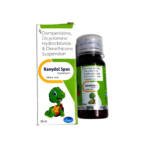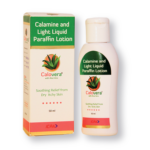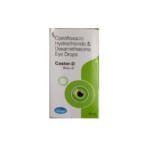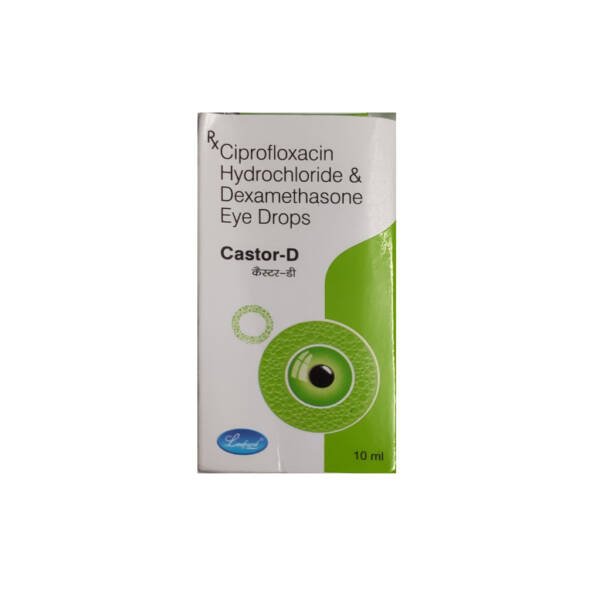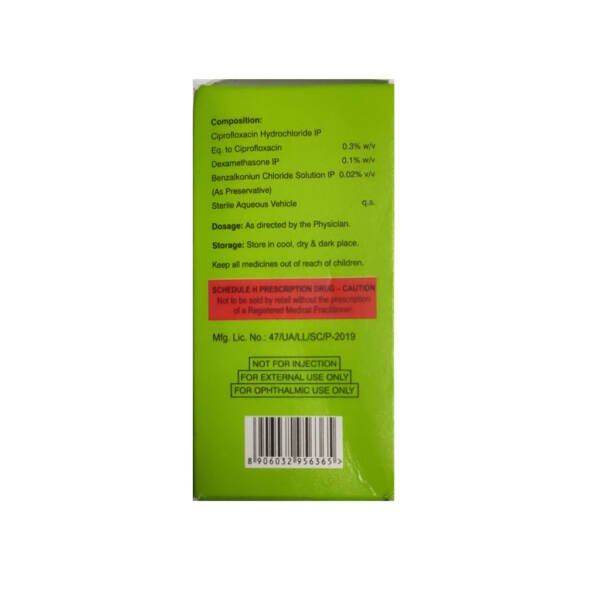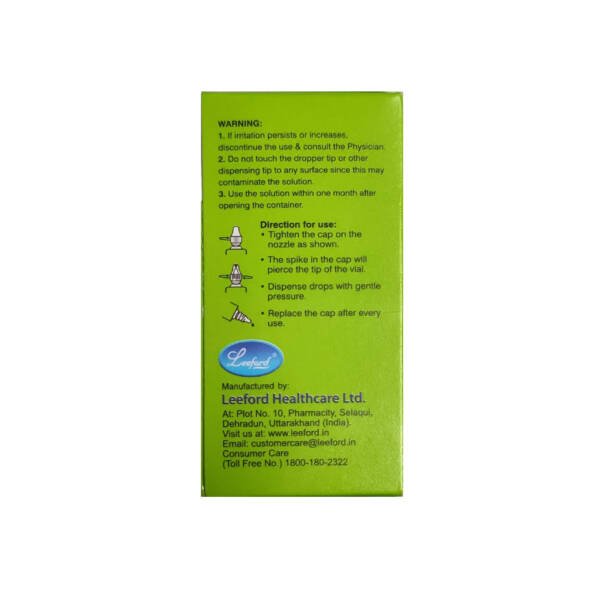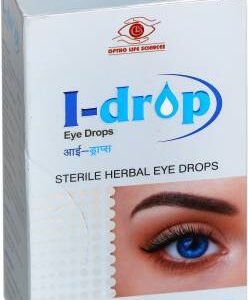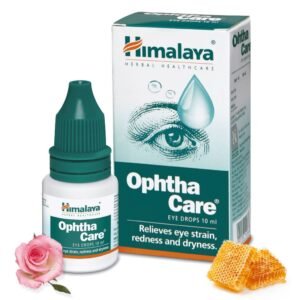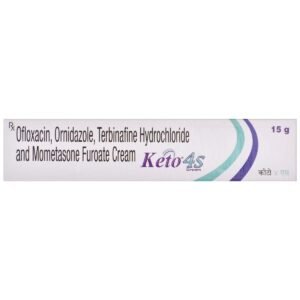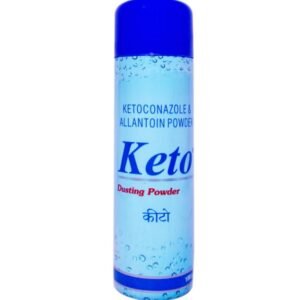Description
CASTOR D EYE DROP INFORMATION
Ciprofloxacin IN CASTOR D EYE DROP
As with other antibacterial preparations, prolonged use of ciprofloxacin may result in overgrowth of non-susceptible organisms, including fungi. If super-infection occurs, appropriate therapy should be initiated. Whenever clinical judgement dictates, the patient should be examined with the aid of magnification, such as slit-lamp
biomicroscopy and, where appropriate, fluorescein staining.
Ciprofloxacin should be discontinued at the first appearance of a skin rash or any other sign of hypersensitivity reaction.
In clinical studies of patients with bacterial corneal ulcers, a white crystalline precipitate located in the superficial portion of the corneal defect was observed in 35 (16.6%) of 210 patients. The onset of the precipitate was within 24 hours to 7 days after starting therapy.
In 1 patient, the precipitate was immediately irrigated out upon its appearance. In 17 patients, resolution of the precipitate was seen in 1–8 days (in 7 days if treated within the first 24–72 hours).
In 5 patients, resolution was noted in 10–13 days. In 9 patients, exact resolution days were unavailable; however, at follow-up examinations, 18–44 days after onset of the event, complete resolution of the precipitate was noted. In 3 patients, outcome information was unavailable. The precipitate did not preclude continued use of ciprofloxacin, nor did it adversely affect the clinical course of the ulcer or visual outcome.
Tendon inflammation and rupture may occur with systemic fluoroquinolone therapy, including ciprofloxacin, particularly in elderly patients and those treated concurrently with corticosteroids. Therefore, treatment with ciprofloxacin eye/ear drops should be discontinued at the first sign of tendon inflammation.
During therapy, soft contact lenses should not be worn. Contact lens wear is not recommended during treatment of an ocular infection. Therefore, patients should be advised not to wear contact lenses during treatment with CASTOR D EYE DROP.
Dexamethasone IN CASTOR D EYE DROP
General
The possibility of persistent fungal infections of the cornea should be considered after prolonged corticosteroid dosing. There have been reports of bacterial keratitis associated with the use of multiple-dose containers of topical ophthalmic products. These containers had been inadvertently contaminated by patients who, in most cases, had a concurrent corneal disease or a disruption of the ocular epithelial surface.
Warnings CASTOR D EYE DROP
Prolonged use may result in ocular hypertension and/or glaucoma, with damage to the optic nerve, defects in visual acuity and fields of vision, and posterior subcapsular cataract formation. Prolonged use may suppress the host response and, thus, increase the hazard of secondary ocular infections.
In those diseases causing thinning of the cornea or sclera, perforations have been known to occur with the use of topical corticosteroids. In acute purulent conditions of the eye or ear, corticosteroids may mask infection or enhance existing infection. If these products are used for 10 days or longer, intraocular pressure should be routinely monitored even though it may be difficult in children and uncooperative patients.
Employment of corticosteroid medication in the treatment of herpes simplex other than epithelial herpes simplex keratitis, in which it is contraindicated, requires great caution; periodic slit-lamp microscopy is essential.
Contraindications CASTOR D EYE DROP
- A history of hypersensitivity to ciprofloxacin, dexamethasone or any other component of the medication is a contraindication to its use.
- A history of hypersensitivity to other quinolones may also contraindicate the use of ciprofloxacin.
- CASTOR D EYE DROP Use is contraindicated in herpes simplex and other viral diseases of the cornea and conjunctiva, fungal disease, ocular tuberculosis, untreated purulent infections, patients with a history of acute epithelial herpes simplex keratitis or hypersensitivity to any component of the preparation.
- Use is contraindicated in viral infections of the external canal, including herpes simplex infections and fungal otic infections.
https://herbichem.com/product/himalaya-ophtha-care-eye-drops/

